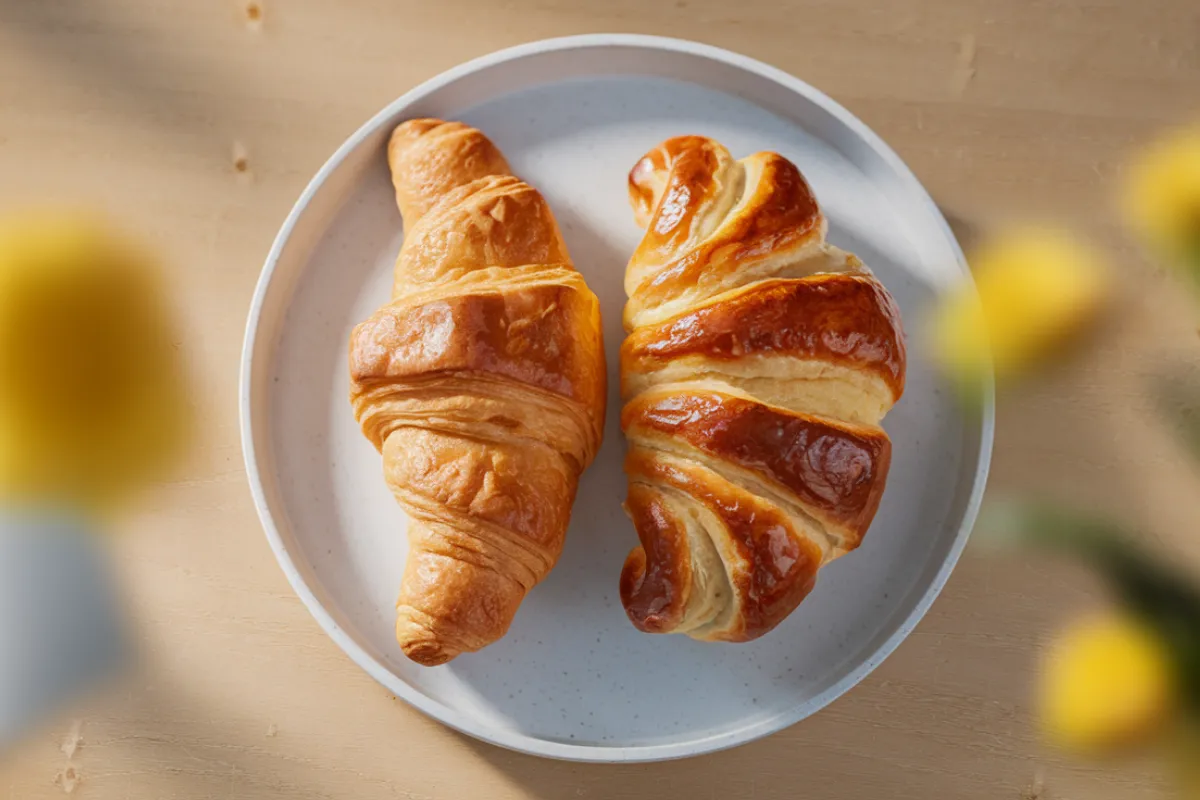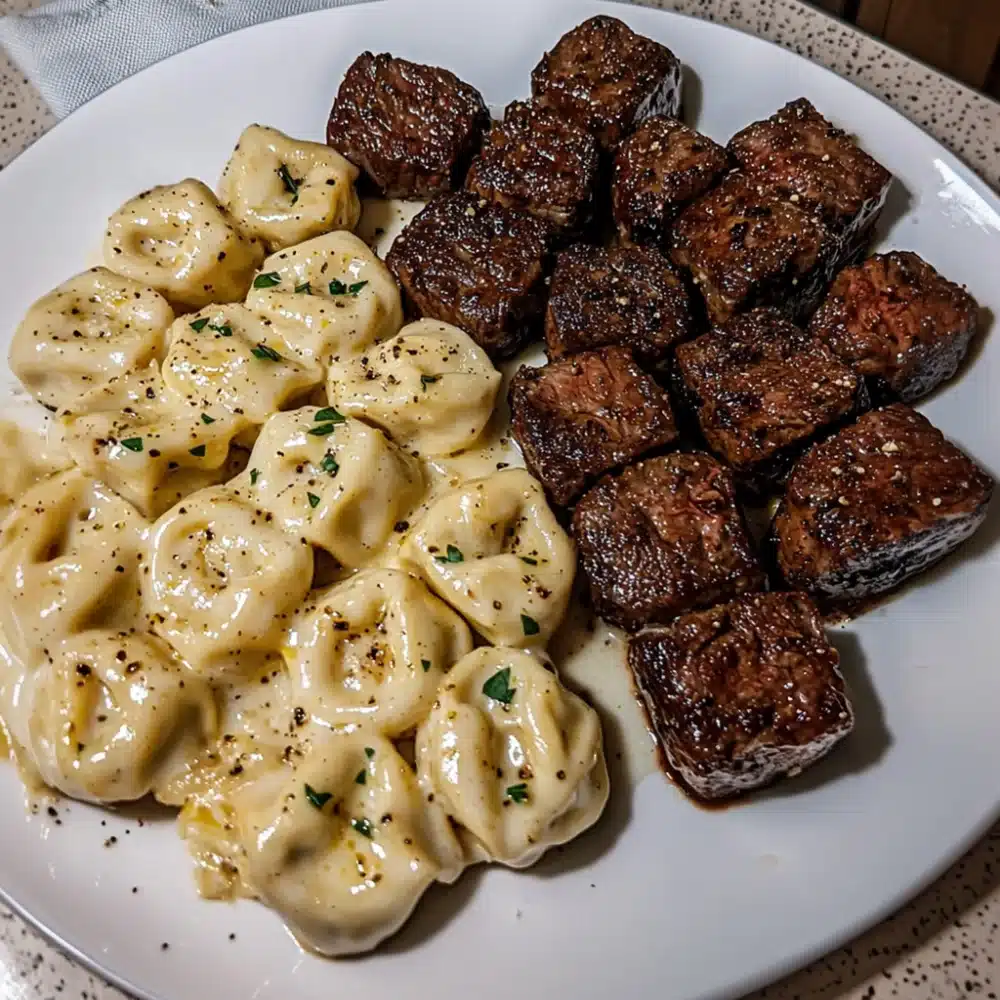Understanding the difference between a croissant and a Gipfeli involves more than just recognizing them as different pastries. These well-loved baked goods each have a rich history, unique ways of being made, and special cultural importance that make them stand out from each other.
Introduction to the Topic: Croissant vs. Gipfeli
If you’ve ever strolled through the streets of Paris or Zurich early in the morning, you’ve probably noticed the delightful smells of fresh-baked pastries in the air. Among the most popular of these are the croissant and the Gipfeli. While they may look alike at first, they differ in several key ways. Understanding these differences not only adds to your food knowledge but also helps you appreciate the cultural stories behind these delicious treats.
This article will explore the origins, how they are made, and the cultural importance of both the croissant and the Gipfeli, showing the unique traits that set them apart.
The Origin of Croissants and Gipfeli
Croissant: A Classic French Pastry with Austrian Roots
The croissant, with its well-known crescent shape and flaky texture, is often thought of as a classic French pastry. However, it actually originated in Austria. The croissant developed from the Austrian kipferl, a crescent-shaped bread that dates back to the 13th century. In the 19th century, French bakers began transforming the kipferl into the croissant we know today.
An Austrian officer named August Zang introduced the croissant to France when he opened a Viennese bakery in Paris in the 1830s. The bakery’s products quickly became very popular, and French bakers started replicating and improving upon the kipferl, which led to the creation of the buttery, flaky croissant now closely linked to French culture. To learn more about the history of the croissant, you can explore further.
Gipfeli: The Swiss Croissant
In contrast, the Gipfeli, often referred to as the “Swiss croissant,” originated in Switzerland, especially in the German-speaking regions. Unlike the French croissant, the Gipfeli remains less known outside of Switzerland but has become a staple in Swiss bakeries. The word Gipfeli comes from the Swiss-German word “Gipfel,” meaning “peak” or “summit,” which refers to its crescent shape.
Gipfeli evolved from German baking traditions, and although they share a similar shape to croissants, they differ greatly in taste, texture, and preparation. Over time, the Swiss adapted the recipe, resulting in a denser, less flaky pastry that people still enjoy today. The Gipfeli holds a significant place in Swiss culture, often featuring in a simple breakfast or a light snack. For more about Gipfeli and other Swiss pastries, explore the Swiss Pastry Tradition.
Cultural Significance: Croissant vs. Swiss Gipfeli
While the croissant symbolizes French culinary skill and often represents elegance and indulgence, the Gipfeli reflects the simplicity and practicality of Swiss culture. Both pastries are deeply rooted in their respective countries’ traditions and continue to be loved by locals and visitors alike.
Ingredients Used in Croissants and Gipfeli
The main differences between croissants and Gipfeli begin with the ingredients. Both pastries start with basic components such as flour, yeast, and butter, but the amounts and extra ingredients set them apart.
Croissant Ingredients for a Flaky French Pastry
- A high amount of butter for a rich, flaky texture
- All-purpose flour
- Yeast
- Sugar and salt
- Milk or water
Gipfeli Ingredients: The Simpler Swiss Croissant
- A lower butter content compared to croissants
- All-purpose flour
- Yeast
- Salt
- Some versions include milk or butter, but in smaller amounts
The high butter content in croissants is key to achieving their signature flaky texture, whereas Gipfeli typically contain less butter, which contributes to their denser consistency.
Dough Preparation Techniques: Laminated vs. Yeast-Based
The way bakers prepare the dough is where the croissant and Gipfeli truly differ. The process used to make a croissant is called lamination, which involves folding butter into the dough multiple times to create thin layers.
Laminated Dough for Croissants: Creating the Perfect Flaky Layers
- Bakers roll out the dough, layer it with butter, and fold it several times
- This creates a dough with many thin layers of butter and pastry
- When baked, the butter melts and creates steam, causing the layers to puff up and separate, resulting in the croissant’s flaky texture
Yeast-Based Dough for Gipfeli: A Denser, Bread-Like Texture
- Bakers mix the dough with yeast and let it rise, but skip the lamination process
- They roll the dough into a crescent shape and bake it directly
- This results in a denser, more bread-like texture with fewer layers
If you want to master the art of making laminated dough, check out Laminated Dough Techniques, which provides a simple guide to achieving the perfect croissant texture.
Baking Process: Croissants vs. Gipfeli
The baking process further highlights the differences between croissants and Gipfeli. Each pastry requires specific techniques to achieve its desired outcome.
Baking Croissants: High Heat for a Golden, Flaky Finish
- Bakers bake croissants at a high temperature, around 375°F to 400°F (190°C to 200°C)
- The high temperature ensures that the layers puff up, creating the light, airy texture that croissants are famous for
- The outside becomes golden and crisp, while the inside remains soft and tender
Baking Gipfeli: Lower Heat for a Substantial, Bread-Like Pastry
- Bakers bake Gipfeli at a slightly lower temperature, around 350°F (175°C)
- This method results in a pastry that is less flaky but more substantial and filling
- The outer layer does not become as crispy, giving the Gipfeli a more bread-like consistency
Shape and Appearance: French Croissant vs. Swiss Gipfeli
Both croissants and Gipfeli share the classic crescent shape, but their appearance can vary based on regional adaptations.
Croissant Shape: Larger and Flakier
- Typically larger, with a more pronounced crescent shape
- The exterior is shiny and golden brown, with visible layers from the lamination process
Gipfeli Shape: Smaller and Denser
- Often smaller and more compact
- The crescent shape is less exaggerated, and the texture appears smoother and less layered
Flavor and Texture Comparison: Croissant and Gipfeli
The difference in preparation methods directly impacts the flavor and texture of these pastries.
Croissant Flavor and Texture: Rich, Buttery, and Flaky
- A rich, buttery flavor due to the high butter content
- A flaky, light, and airy texture with a crisp outer layer
- Ideal for both sweet and savory fillings
Gipfeli Flavor and Texture: Subtle, Sweet, and Bread-Like
- A more subtle, slightly sweet flavor with a hint of yeast
- Denser and less flaky, with a texture closer to that of bread
- Often enjoyed plain or with simple spreads
Variations and Regional Differences in Croissants and Gipfeli
Both the croissant and Gipfeli have inspired a variety of regional variations, each offering a unique twist on the traditional recipe.
Variations of Croissants: Almond, Chocolate, and Savory Options
- Almond Croissants: Filled with almond paste and topped with slivered almonds and powdered sugar
- Chocolate Croissants (Pain au Chocolat): Filled with dark chocolate sticks, offering a rich contrast to the buttery dough
- Savory Croissants: Stuffed with ham, cheese, or other savory fillings, making them a popular choice for lunch
Variations of Gipfeli: Laugengipfeli, Nussgipfeli, and Mandelgipfeli
- Laugengipfeli: A savory version, often dipped in lye (similar to pretzels) before baking, giving it a distinctive flavor and chewy texture
- Nussgipfeli: Filled with a sweet nut paste, providing a richer flavor profile
- Mandelgipfeli: Topped with almond slices, similar to almond croissants but with a denser texture
Nutritional Differences: Croissants vs. Gipfeli
When it comes to nutrition, croissants and Gipfeli offer different benefits depending on your dietary preferences.
Croissant Nutrition: Rich and Indulgent
- Higher in calories and fat due to the high butter content
- Provides a rich source of carbohydrates and energy
- Often considered an indulgence rather than a daily staple
Gipfeli Nutrition: Lower in Fat and Calories
- Lower in fat and calories compared to croissants
- Offers a more balanced nutritional profile with less saturated fat
- Can be enjoyed more frequently as part of a balanced diet
The Role of Croissants in French Cuisine
In France, the croissant is more than just a pastry—it’s a cultural icon. People typically enjoy a croissant as part of a traditional French breakfast, often serving it with coffee or hot chocolate, sometimes accompanied by jam or butter.
The croissant has also found its place in the global culinary scene, with variations and interpretations available in bakeries around the world. It symbolizes French culinary expertise and has become a must-try for anyone visiting France.
The Role of Gipfeli in Swiss Cuisine
In Switzerland, the Gipfeli is more of an everyday pastry, enjoyed by people of all ages. It is commonly found in bakeries, cafes, and even supermarkets, making it an accessible treat for anyone in Switzerland.
People typically enjoy the Gipfeli with a cup of coffee, often as part of a simple breakfast. While it may not have the international fame of the croissant, it holds a cherished place in Swiss culture.
Global Influence and Adaptation of Croissants and Gipfeli
Both the croissant and Gipfeli have transcended their regional origins to influence pastries around the world.
- The croissant has inspired numerous variations and has been adapted into various culinary traditions, from cronuts to filled croissants.
- The Gipfeli, though less internationally recognized, has contributed to the diversity of European baked goods, with variations found in neighboring countries like Germany and Austria.
FAQs: Understanding Croissant vs. Gipfeli
Here are some commonly asked questions about the differences between a croissant and a Gipfeli:
- What is the difference between a croissant and a Swiss croissant?
- A Swiss croissant, or Gipfeli, is typically denser and less flaky than a French croissant. It is made with yeast dough rather than laminated dough.
- Is Gipfeli healthier than a croissant?
- Gipfeli generally contains less butter and is lower in calories compared to a croissant, making it a slightly healthier option.
- Can you make croissants and Gipfeli at home?
- Yes, you can make both at home with the right ingredients and techniques. Croissants require more skill due to the lamination process, while Gipfeli are easier to make.
- What are the best fillings for croissants and Gipfeli?
- Croissants can be filled with almond paste, chocolate, ham, and cheese. Gipfeli are often enjoyed plain but can also be filled with nuts or sweet fillings.
- Why are French croissants considered superior to others?
- French croissants are known for their high butter content and expertly executed lamination process, which creates a superior flaky texture and rich flavor.
Summary of Key Differences: Croissant vs. Gipfeli
In summary, while croissants and Gipfeli may look similar, they differ in many ways. The croissant stands out for its flaky, buttery layers, achieved through the labor-intensive lamination process. In contrast, the Gipfeli is denser and more bread-like, reflecting its Swiss-German origins and simpler preparation method.
Final Thoughts on Cultural Importance
Both pastries represent the culinary traditions of their respective countries, offering a glimpse into the unique food culture of France and Switzerland. Whether you prefer the rich, flaky indulgence of a croissant or the more understated, satisfying bite of a Gipfeli, both are worthy of appreciation.
Next time you find yourself in a bakery, why not try both and taste the difference for yourself? You may discover a new favorite or gain a deeper appreciation for the subtle variations that make these pastries so special.





